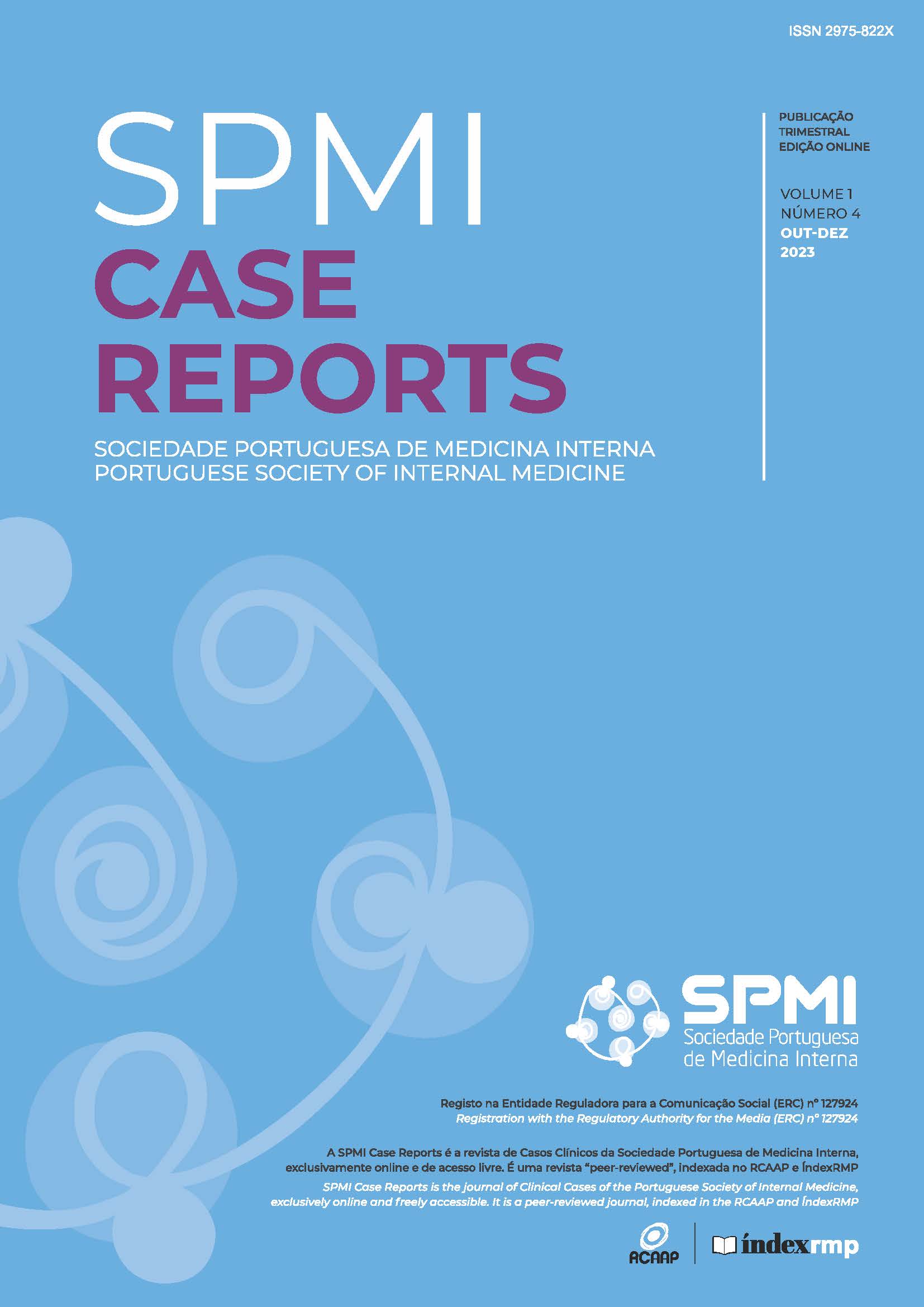Toxic Epidermal Necrolysis: A Rare Entity to Be Considered
DOI:
https://doi.org/10.60591/crspmi.63Keywords:
Immune Checkpoint Inhibitors/adverse effects, Pembrolizumab/adverse effects, Stevens-Johnson Syndrome/diagnosis, Stevens-Johnson Syndrome/etiologyAbstract
Non-small cell lung cancer is a common, high-mortality type of malignancy. Immunotherapy with immune checkpoint inhibitors, such as pembrolizumab, is a recent therapeutic option. Although skin alterations are common adverse effects of these drugs, serious reactions, such as toxic epidermal necrolysis, are rare. This high-mortality disease is characterized by the desquamation of the skin and mucous membranes. In this case, we present a 61-year-old man with metastatic lung adenocarcinoma, undergoing chemotherapy and pembrolizumab. Initial hospitalization was due to sepsis with multiorgan dysfunction. Simultaneously, the patient presented very flaking skin, which worsened throughout the hospital stay, with a subsequent fatal diagnosis of toxic epidermal necrolysis secondary to pembrolizumab. A high diagnostic suspicion is essential for the early recognition and treatment of this disease, to reduce morbidity and mortality.
Downloads
References
Tang S, Qin C, Hu H, Liu T, He Y, Guo H, et al. Immune Checkpoint Inhibitors in Non-Small Cell Lung Cancer: Progress, Challenges, and Prospects. Cells. 2022;11:320. doi:10.3390/cells11030320.
Bugalho A, Morais A e Ferreira AJ. Pneumologia Fundamental. LIDEL. 1ª ed. 2019.
Lim SM, Hong MH, Kim HR. Immunotherapy for Non-small Cell Lung Cancer: Current Landscape and Future Perspectives. Immune Netw. 2020;20:e10. doi:10.4110/in.2020.20.e10.
Jiang Y, Chen M, Nie H, Yuan Y. PD-1 and PD-L1 in cancer immunotherapy: clinical implications and future considerations. Hum Vaccin Immunother. 2019;15:1111-22. doi:10.1080/21645515.2019.1571892.
Ema.europa.eu [homepage na Internet]. Resumo das características do medicamento – Pembrolizumab. [consultado 18 Fev 2023]. Disponível em: https://www.ema.europa.eu/.
Gomes N, Sibaud V, Azevedo F, Magina S. Cutaneous Toxicity of Immune Checkpoint Inhibitors: A Narrative Review. Acta Med Port. 2020;33:335-43. doi: 10.20344/amp.12424.
Neema S, Sathu S, Vasudevan B, Shreshta S, Bhatt S, Lekshmipriya K. Pembrolizumab-induced toxic epidermal necrolysis: A rare cause of severe adverse drug reaction. Indian J Dermatol Venereol Leprol. 2023;89:589-91. doi: 10.25259/IJDVL_612_2022.
Chow K, O’Leary C, Paxton-Hall F, Lambie D, O’Byrne K. Pembrolizumab-induced toxic epidermal necrolysis: case report. Oxf Med Case Rep. 2022,3,112–4. doi: 10.1093/omcr/omac025.
Borg L, Buhagiar M, La Ferla E, Pisani D, Said J, Boffa M. Pembrolizumab-Induced Toxic Epidermal Necrolysis. Case Rep Oncol. 2022:887-93. doi: 10.1159/000526931.
Labib A, Milroy C. Toxic Epidermal Necrolysis. [Updated 2022 Sep 12]. In: StatPearls [Internet]. Treasure Island: StatPearls Publishing; 2022.
Harr T, French LE. Toxic epidermal necrolysis and Stevens-Johnson syndrome. Orphanet J Rare Dis. 2010,5:39. doi: 10.1186/1750-1172-5-39.
Downloads
Published
How to Cite
License
Copyright (c) 2023 Mariana Quelhas, Daniela Nascimento Silva, Ana Catarina Rodrigues, Lucia Cristina Carrera Bolaños, Aida Cordero Botejara, Maria del Mar Barba Dominguez

This work is licensed under a Creative Commons Attribution 4.0 International License.







